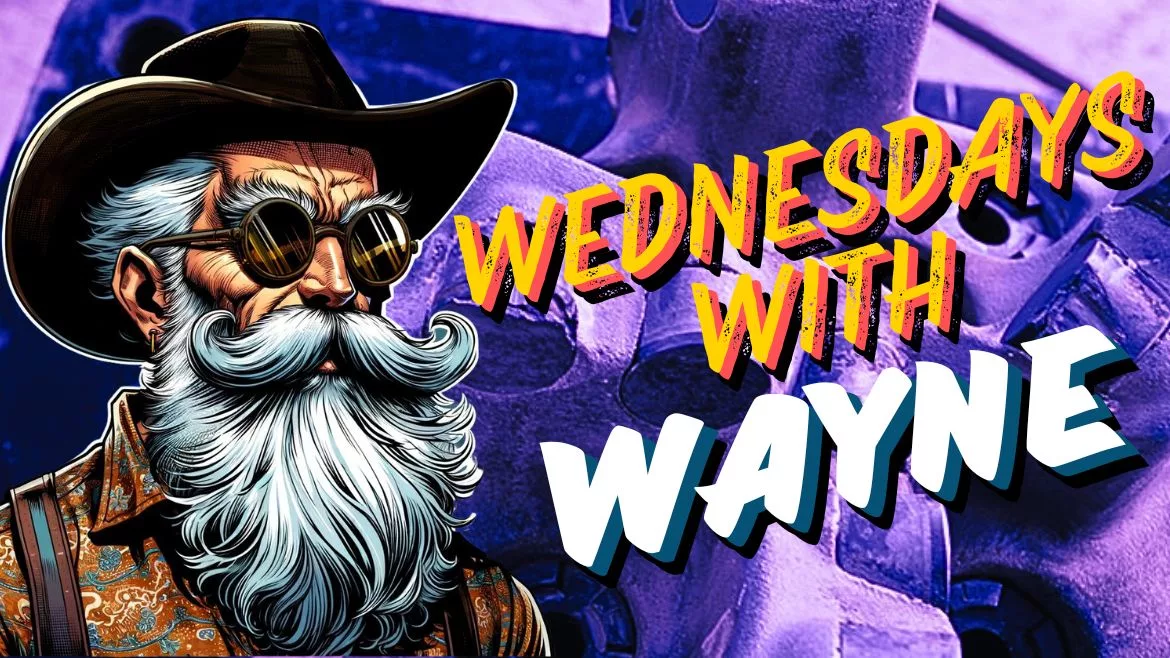Wednesdays with Wayne
PDC = Pretty Darn Costly: A Drill 'Bit' from Brock
Learn the fundamental differences between PDC bits now VS then with Brock Yordy and Wayne Nash

This week’s Wednesday with Wayne: Let's demystify PDC bits' fundamentals, performance, and life cycle. Wayne sums it up beautifully when he says, “I am gonna get some grief from the mud engineer.” Yes, Wayne, you are getting some grief this week from a classically trained mud engineer and third-generation driller.
However, if I could sit down next to the legendary Wayne Nash and discuss our points of view, he would laugh and say, “You got some good points, kid, but a lot has been learned about PDCs from the time I started running them, and you were in diapers back then. Now, you are running them while many of the drillers I once knew are now back in diapers and well into their retirements.” At least, that’s the story I envisioned while reading the words of legend.
I believe many research scholars would agree that when you read the words of a change maker sharing knowledge, it's easy to see the new world vs. the days of what we knew through analogy. So, let's dissect Nash’s popular past article, “What Drillers Should Know about PDC Bits.”
Historical Evolution of PDC Technology
The inception of the PDC in 1971, a brainchild of innovators at General Electric, marked a significant leap in drilling technology. After a few years of dedicated research and development, in 1976, PDCs were commercially available worldwide. The initial concept aimed to design a drill bit that could compete with the production footage of a downhole hammer while eliminating a large air compressor, thereby saving fuel costs. Considering the fuel costs and issues at that time, this was a game-changer. PDCs became cost-effective to the industrial drilling market in the late nineties. However, it wasn’t until the mid-2000s that PDCs surpassed production footage from the tricone, a testament to the continuous evolution of drilling technology.
Technical Challenges and Solutions
Understanding the history of the PDC is crucial, but let's not forget to delve into its practical implications as well. PDCs excel in competent formations and perform optimally with proper bit weight and rotation. Unfortunately, our industry faces two major issues: bit weight and rotation. The first is the actual string weight, including drill collars, not what a rig can expert in pull down for weight. Second, many rigs lack adequate rotation to achieve optimal bit life. Discussing the exact parameters for the best bit wear and life with the PDC manufacturer is advisable. If you're experiencing issues with bit booting and unusual wear to cutters, it's likely a rotation issue. If you're dealing with chipped cutters, it's a weight-on-bit issue, indicating excessive agitation at the bit face.
Environmental Considerations and Best Practices
Next, let's talk about cutting size and fluid dynamics. A traditional tricone bit creates cuttings from ¼ of an inch to 1 inch in diameter. PDC creates cutting sizes of 100 microns and beyond. This is important because rotation and pumping rate will prevent bit balling and booting off. Smaller cutting sizes require more surface area and fluid to push a dense solids solution to the surface. However, to clarify, let's understand that today, Hybrid PDC performs multiple jobs, from acting as a drag bit in large reactive formations to creating small cuttings in nonreactive fine formations.
Understanding the PSI at bit face along with uphole velocity is 100% going to impact your ability to maintain productive footage throughout the hole. Finally, using phosphates or store-brand soaps with phosphate ingredients is 100% strictly prohibited and will contaminate aquifers. Phosphates are a major nutrient source for microorganisms. Drilling Professionals must utilize standard 60 or 61 NSF-approved products for drilling.
Reflections and Advice from the Field
If I could stand on a job site with my mud kit and clipboard next to Wayne Nash, I know the day would be long, educational, and collaborative. He had an amazing ability to collaborate with everyone on site, make the job site fun, and find a way to teach us while laughing. I always think of the quote from WWII General Patton that reminds me of Wayne, “When I want my men to remember something important and make it stick, I give it to them double dirty. It may not sound nice to some bunch of little old ladies at an afternoon tea party, but it helps my soldiers to remember. You can't run an army without profanity, and it has to be eloquent profanity. An army without profanity couldn't fight its way out of a piss-soaked paper bag. As for the types of comments I make, sometimes I just, By God, get carried away with my own eloquence.”
Thank you, Wayne, for sharing knowledge in an analog world that we can revisit in a digital world. All you can do is give it to us “double dirty” and gracefully from the pearly gates. My advice is to take the legends' advice and my advice and blend them into the best situation for your project.
Read Wayne Nash’s original article, “What Drillers Should Know about PDC Bits.”
Looking for a reprint of this article?
From high-res PDFs to custom plaques, order your copy today!






